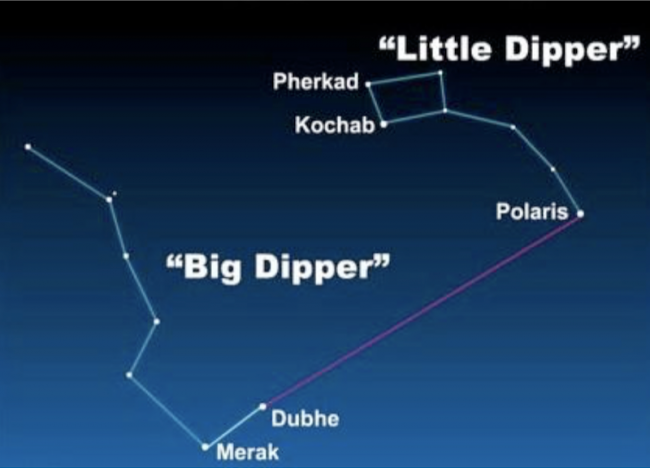Sky Report: April 5 – April 11

Posted by Bruce McClure in Favorite Star Patterns | March 7, 2021
I always begin with the moon and planets because they’re what changes the fastest in the sky. That’s true for the moon this week which passes near Saturn and then Jupiter on the mornings of the 5th, 6th, and 7th. You’ll need to be up early to see them – a half hour or so before sunrise is about right – and you’ll need a low southeastern horizon. Jupiter is brighter than any star but it’s only about 15° high, while Saturn is 1/13th as bright and is 12° to the right of Jupiter.
On the morning of the 5th the thin crescent moon is to the right of Saturn; on the morning of the 6th the thinner crescent moon is immediately below Saturn, and on the morning of the 7th it is 5° directly below Jupiter in a nice pairing.
Daylight Saving Time makes the sun rise an hour later just as it makes the sun set an hour later (its purpose) and in April you don’t have to rise at an awful hour to see the morning planets and then the sunrise.
Jupiter and Saturn rise 4 minutes earlier each morning and are very slightly higher at the same time each morning.
Mars remains the sole planet in the evening sky and you’ll find it halfway up the western sky as the sky grows dark. Mars was brighter than any star when we were closest to it last October, but that was then – now it’s distant and no longer dominates the sky. Look for it above the orange star Aldebaran in Taurus the Bull and to the upper right of Orion the Hunter. The Hyades and Pleiades star clusters are below Mars; recall that Mars was between them precisely one month ago.
The Big Dipper has risen in the northeast as darkness falls. The Dipper is made of seven stars, and the middle five are moving together through space on parallel paths. These five stars were born together about 300 million years ago and so are traveling together in the same direction and at the same speed as they orbit the Milky Way. They’re about 80 light years away. The two end stars of the Dipper happen to appear to be nearby but actually are more distant, and other stars that are not as bright are also part of the group. Google “Ursa Major Moving Group” for more information.
The Sky Report is presented as a public service by the Stellar Vista Observatory, a nonprofit organization based in Kanab, Utah, which provides opportunities for people to observe, appreciate, and comprehend our starry night sky. Additional information is at www.stellarvistaobservatory.org. Send questions and comments to
John@StargazingAdventures.org.






Comments are closed.